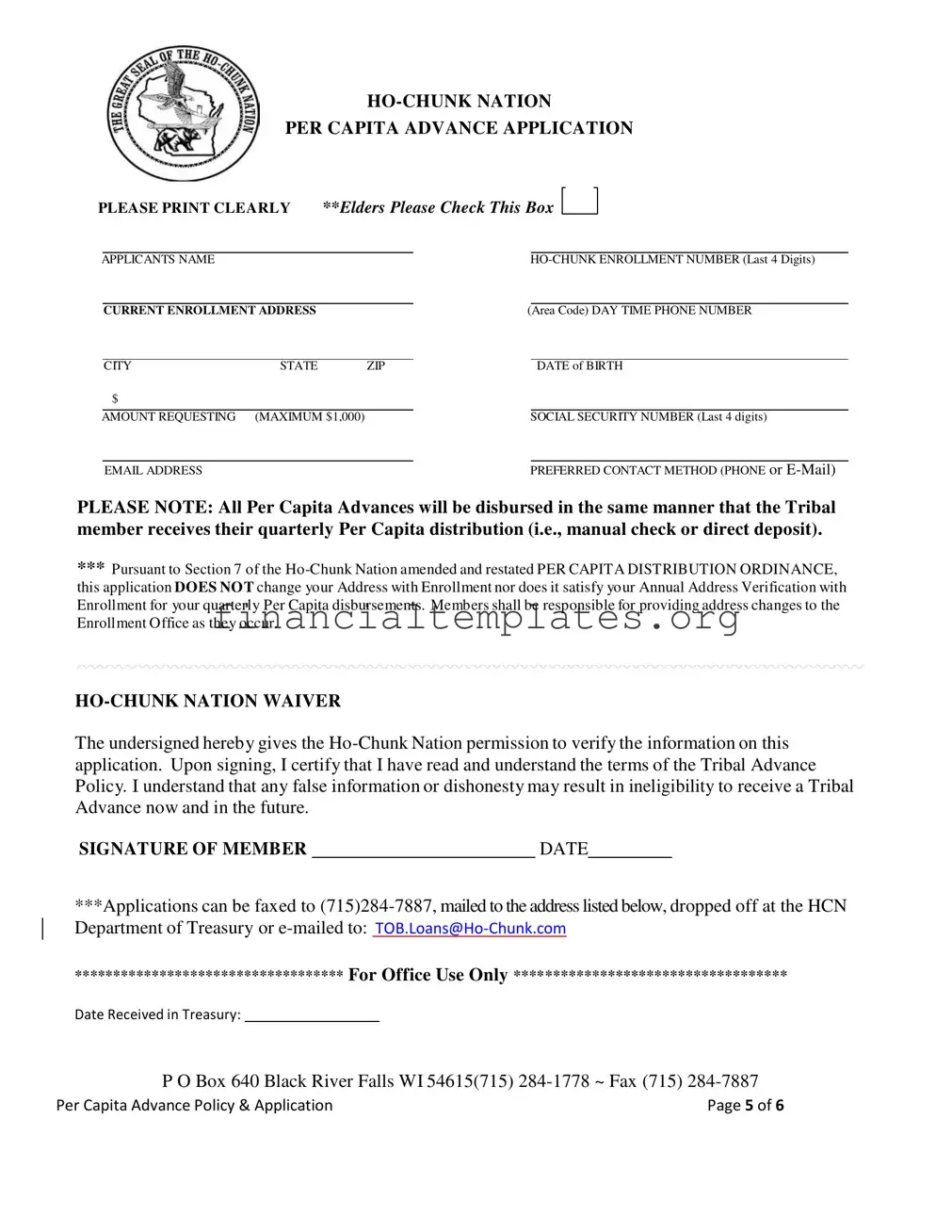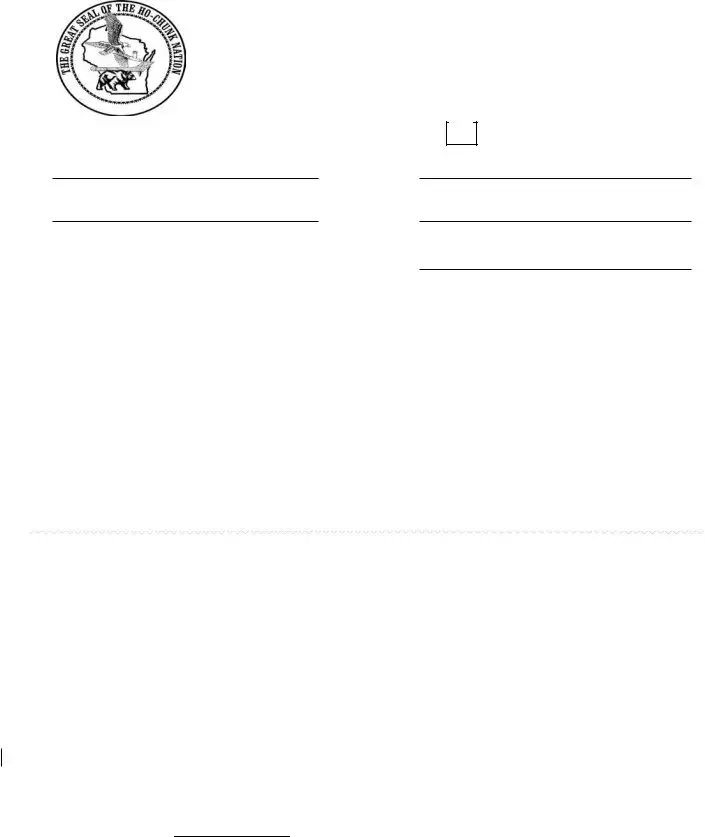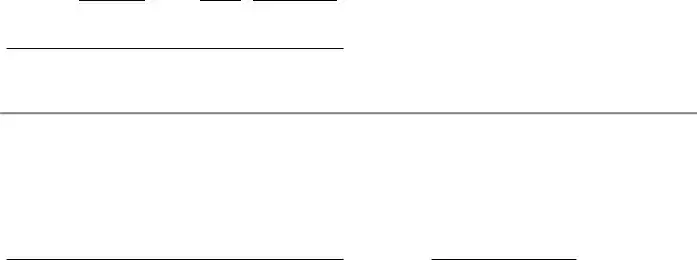The Ho-Chunk Per Cap Loan form shares similarities with a personal loan application typically encountered in financial institutions. Like the Ho-Chunk document, personal loan applications require applicants to provide personal details, financial information, and the loan amount they are requesting. Both forms also include a section where the borrower agrees to the terms of the loan, which often calls for verification of the information provided, similar to the permission granted to the Ho-Chunk Nation to verify application details. The primary distinction lies in the collateral; traditional loans may require physical assets, whereas the Ho-Chunk form pledges future per capita distributions as collateral.
Another document bearing resemblance to the Ho-Chunk Per Cap Loan form is the Employment Verification Form used by employers to confirm an employee's status and salary. This form requires employees to authorize the release of their employment information, akin to the waiver section in the Ho-Chunk document where applicants allow verification of their information. Both forms serve a protective function: the former for third-party entities needing employment verification and the latter for the Ho-Chunk Nation to ensure the accuracy of the application data.
The Student Financial Aid Application is also similar to the Ho-Chunk form in that it requests detailed personal and financial information from the applicant to process a request for financial assistance. Much like the per capita advance application, the financial aid form sometimes necessitates permission to authenticate provided information and to access records that support the applicant's financial need. The aim is to establish eligibility for aid, paralleling the Ho-Chunk form's goal of validating eligibility for an advance.
A Mortgage Application form mirrors the Ho-Chunk Per Cap Loan form in structure and intent. Applicants must disclose personal information, financial status, and details about the property. Similar to the pledge agreement in the Ho-Chunk document, mortgage applications also include a section where the applicant must agree to terms, including allowing the lender to verify the provided information. However, a mortgage application secures a loan against real property, while the Ho-Chunk form uses future distributions as collateral.
The Rental Application form is another document that aligns with the Ho-Chunk Per Cap Loan form. It collects applicant information to assess eligibility for tenancy, much like the Ho-Chunk form's collection of information to assess eligibility for a loan. Also, both forms typically require consent to perform background checks, which in the case of the rental application includes credit and rental history, paralleling the Ho-Chunk Nation's permission to verify application details.
The Credit Card Application process shares similarities with the Ho-Chunk advance application as well. Applicants must provide personal and financial information and consent to a credit check, echoing the Ho-Chunk form's requirement for application verification. Additionally, both processes involve an agreement to certain terms and conditions related to financial transactions. While the credit card application might lead to an open line of credit, the Ho-Chunk application specifically requests an advance against future distributions.
Lastly, the Social Security Benefits Application can be likened to the Ho-Chunk Per Cap Loan form. This form requires detailed personal information, and applicants must similarly authorize the Social Security Administration to verify pertinent data, ensuring the information's accuracy and authenticity. Both forms are integral to obtaining financial benefits, with the Social Security application focusing on federal assistance and the Ho-Chunk form on tribal advances against per capita distributions.


